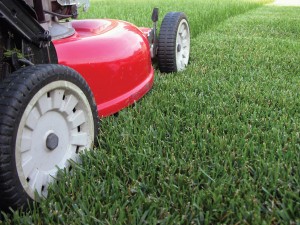Lawn Mowing Tips
Mowing your lawn after watering
Mowing can play a large part in watering your lawn. Make sure the mower blades are sharp. Dull blades will tear the grass instead of cutting. Tearing the leaf blades causes the lawn to lose water and gives the lawn an overall brown appearance.
Mowing frequency is also important so that you don’t cut off more than one-third of the leaf blade at any mowing. This can cause the lawn to lose moisture and stress the turf. Mowing height is critical to maintaining a green, healthy lawn.
Scalping
Scalping is cutting the lawn very short in the early spring and the removal (bagging) of the dormant grass clippings. The dormant grass acts as insulation during the winter months to protect the roots. Removal of the insulation will allow the soil to warm up and green up the lawn quicker. Fescue lawns do not need to be scalped.
Scalping can be done after our last frost, usually after March 20. The following mowing heights are recommended during the growing season:
Common Bermuda – 1 ½” to 2″
Tiff Bermuda – ½” to 1″
St. Augustine – 2″ to 3″
Fescue – 2″ to 3 ½”
Keep the lawn mowed shorter in the spring to promote growth and thickening of the turf. As temperatures begin to heat up, raise the mowing height. During the heat of the summer, the lawn should be mowed at the highest recommended cutting height to help the grass retain water.

